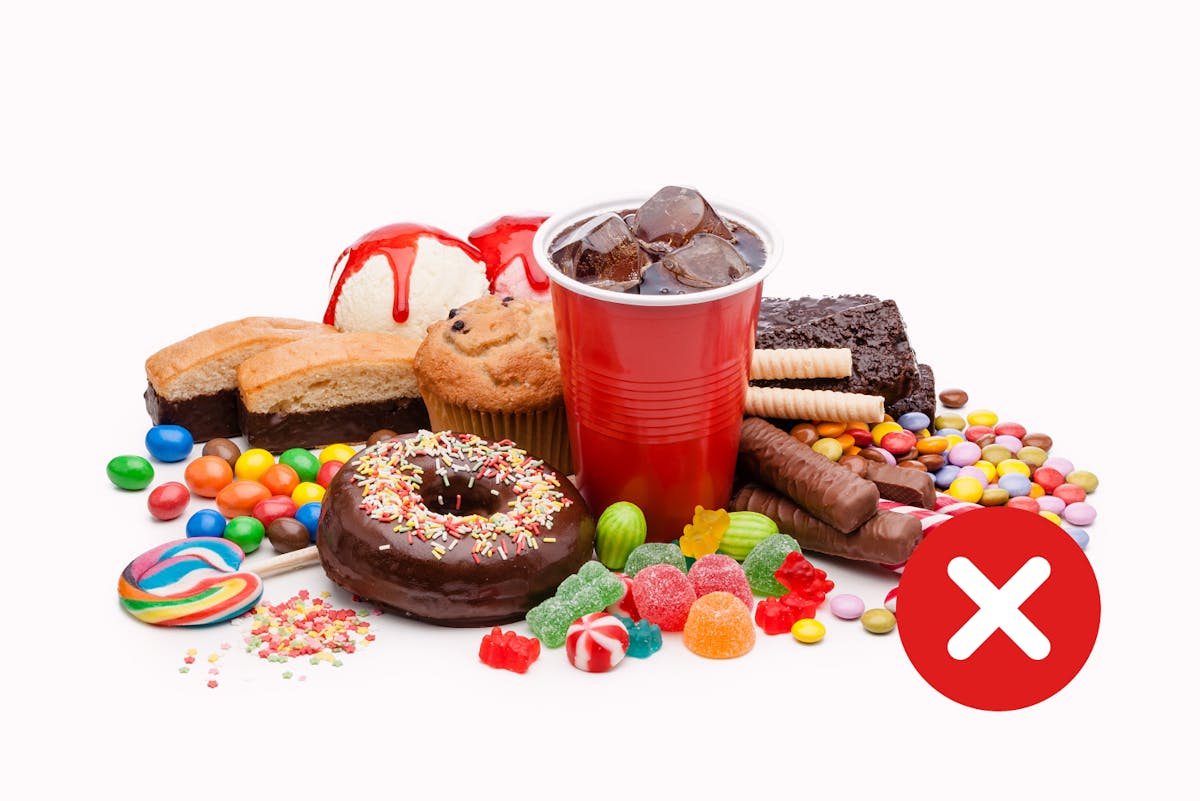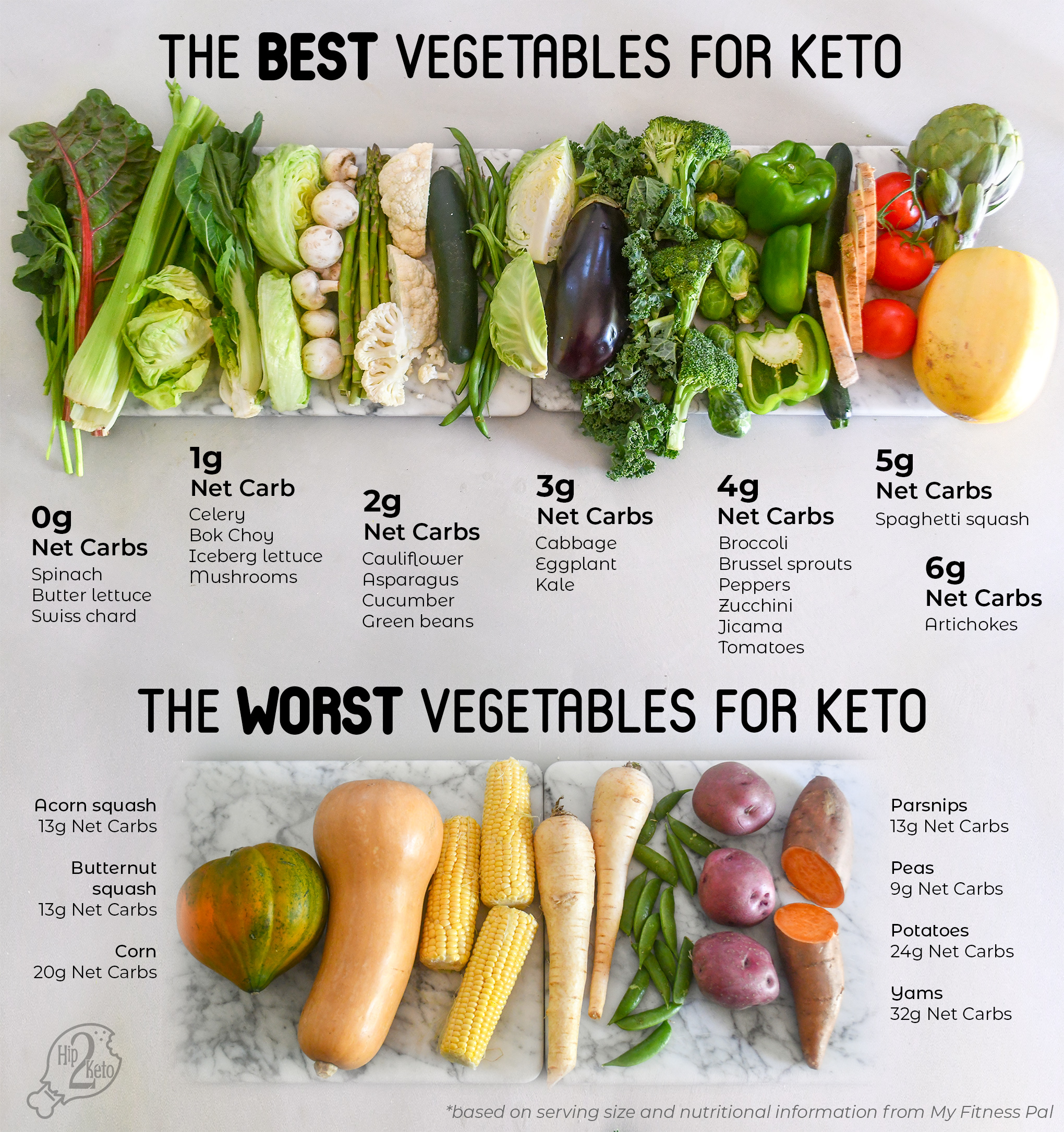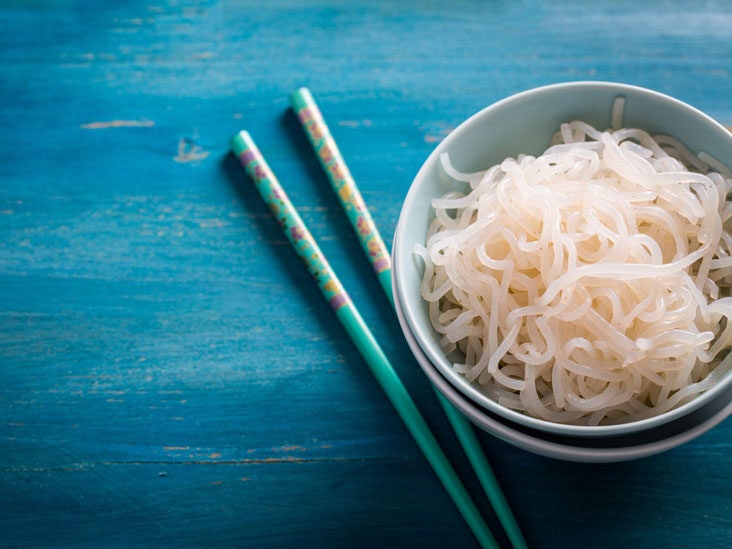Keto Diet, How Many Carbs?
One of the key concepts of the Ketogenic diet is to limit carbohydrate intake to fewer than 50 grams per day.
The goal of limiting carbs is to force your body to use fat as its major energy source rather than glucose from carbohydrates. Fat is an extremely energy-dense molecule, with some of that energy being transformed into ketones. Most of your body's cells can use ketones for energy instead of glucose. You are in nutritional ketosis when your body changes to utilising fat and ketones as its primary energy source.
But that doesn't imply you have to (or even want to) eliminate all carbs from your diet. After all, Keto diet isn't supposed to be a low-carb diet.
In this Keto Beginners Series, we'll discuss the carbohydrate meals that work well with the low carb, high fat Ketogenic diet.
Keto Diet, How Many Carbs Should You Eat?
On the Ketogenic diet, everyone has a somewhat variable level of carbohydrate restriction. Some people can consume more and yet be in ketosis, while others may need to be more restrictive.
Most Ketogenic diet guidelines propose limiting your net carbohydrate intake to 15-30g per day, or 5-10% of total calories.
Total Carbohydrates - Fibre - Sugar Alcohols = Net Carbohydrates
In general, if you are a really active person who exercises 4 to 5 times per week, you will be able to take more carbohydrates while remaining in ketosis.
However, if you lead a sedentary lifestyle and are overweight, we recommend that you limit your carbohydrate intake to achieve ketosis.
Avoiding Carbohydrates on a Ketogenic Diet
Certain foods have unusually high levels of carbs and must be avoided in order to develop and sustain ketosis.
Avoid high-carbohydrate items such as most fruits, pasta, potatoes, candy bars, pastries, donuts, candies, soda, juice, rice, and bread while on a Ketogenic diet.

List of Carbohydrates That Can Be Consumed on a Ketogenic Diet
Now that you know which foods should avoid completely, let's speak about the finest Ketogenic-friendly carb sources you may still use in your diet plan.
Some of the items listed below still contain carbohydrates, so read labels and carefully watch your intake to avoid overdoing it, especially if you're a novice.
#1. Dark Chocolate and Cocoa Powder
Cocoa powder and dark chocolate are excellent substitutes for sugary chocolate bars. They are an excellent source of antioxidants. Chocolate is often referred to be a "superfood" because it includes critical ingredients that aid in overall wellness.
Dark chocolate also contains flavanols, which have been linked to lowering your blood pressure and thereby lowering your risk of heart disease.
It is critical to drink only dark chocolate that includes at least 85% cocoa. Anything less typically has other higher carbohydrate substances that may disrupt ketosis.
Keto Coconut-choc Fat Bombs are a delicious low-carb snack that may be made with cocoa powder or dark chocolate. Simply combine cocoa powder, almond butter, and coconut oil in a bowl and microwave or heat on the stovetop until it produces an uniform liquid. After a half-hour in the freezer, you'll have a wonderful, sweet low-carb snack! If you need a little more sweetness, add a pinch of stevia. More Keto snack ideas may be found here.
#2. Vegetables with Low Carbohydrates
Sugar is stored in vegetables as starch. Non-starchy veggies store less sugar and so have a low starch and carbohydrate content. They are also low in calories, high in fibre, and nutrient-dense, making them an ideal Keto carb source.
Many non-starchy vegetables are high in fibre, which is a carbohydrate in and of itself. Fibre, on the other hand, does not break down into glucose, or sugar, in your digestive system like other carbohydrates, thus it does not count toward your carbohydrate restrictions! This fibre fact is vital to remember while reading labels because fibre is included in the grams of total carbohydrates. Remember to divide total carbs by fibre to calculate how many carbs in the food contribute to your carbohydrate goal.
On Keto, you can eat a lot of the following low-carb vegetables:
Cauliflower
Lettuce
Brussel sprouts
Brussel sprouts
Vegetables
Brussel sprouts are a type of vegetable that grows in Europe.
Above-ground vegetables are often non-starchy and low in carbohydrates (there are some exceptions - always check nutritional information.

Avocados come in third place.
Avocados should be a Ketogenic diet mainstay for everyone. They are high in critical vitamins and minerals such as potassium and magnesium, as well as a good source of monounsaturated fat.
Avocados make the Keto-adaptation phase much easier because they restore the vital nutrients that your body excretes during the initial fat-adaptation period.
One avocado provides just roughly 2-3g of net carbohydrates per serving, making it the ideal Ketogenic fruit!

#4. Berries
Most other fruits are too heavy in carbs and should be avoided. The only exception is berries.
Berries are high in fibre and low in carbohydrates.
These fruits are high in antioxidants, which have been demonstrated to reduce inflammation and protect against disease.
Remember that berries still contain carbs, so consume them in moderation.
#5 Noodles Shirataki
Shirataki noodles are ideal for Keto dieters who miss pasta. Because they are primarily water and fibre, these noodles have less than 1g of carbohydrates.
You can find them at your local health food store, usually in the form of fettuccine, linguine, or rice.
If you want to prepare a pasta dish, use shirataki noodles instead of regular pasta for a great low-carb supper!

#6. Olives
Polyphenols present in olives have been shown in studies to aid reduce inflammation, protect cells from damage, lower blood pressure, and have anticancer properties.
Olives include half of their carbs as fibre, making them an excellent Keto carb source.
The total carbs in a 14g serving of olives are only 1g. This equates to around seven olives containing one gram of carbohydrates!
#7. Cauliflower
If you're looking for a Keto-friendly item to replace carbs like rice and potatoes in your diet, cauliflower is the way to go.
Cauliflower has only 2g of net carbohydrates per cup, so you can eat a lot of it while barely moving the carb needle.
Run some raw cauliflower through a food processor until it resembles rice, then microwave or pan fried the parts in coconut oil to make wonderful cauliflower rice to accompany your main course. Alternatively, boil and mash cauliflower with cream and butter to make a nice replacement for mashed potatoes.

A Little Planning Will Ensure You Stay Low-Carb on Your Ketogenic Journey
While your carb cravings may be severe as a novice on Keto, remember that this is only temporary as your body adjusts to being an efficient fat-burner.
By substituting the low-carb meals listed above for high-carb ones, you will provide your body with the fuel and necessary nutrients it requires to flourish.
Consuming these low-carb items, if done correctly, will also help you stay full, reducing cravings!
Please keep in mind that the information in this article is not medical advise and is solely for informational and educational reasons. Before making any dietary changes, consult with your doctor.








